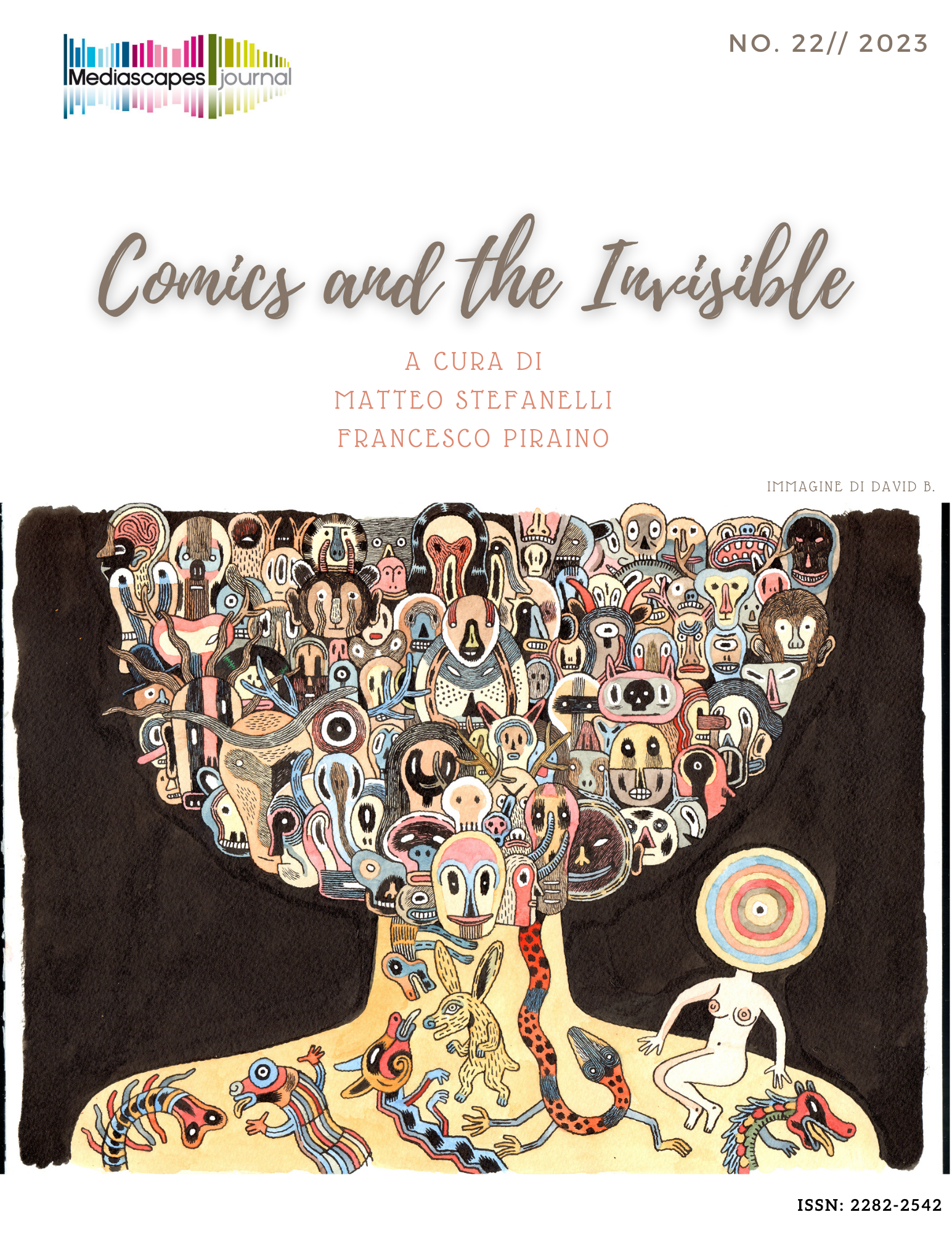Spirituality and Comics in Hugo Pratt, Alan Moore, and David B.
Esotericism as “Unsettled Knowledge”
Parole chiave:
popular culture, comics, spirituality, esotericism, Hugo Pratt, Alan Moore, David B.Abstract
This article describes the artistic production and intellectual and spiritual life of three of the most important artists in the field of comics and graphic novels: Hugo Pratt, Alan Moore, and David B. These artists share a common interest in esotericism: they have participated in esoteric and alternative spirituality groups, and in their artistic works they reproduce esoteric symbols, narratives, and doctrines. Scholars in religious studies have already described the connections between contemporary art and esotericism, arguing that artists are “spiritual seekers” who represent their spiritual quest. This article goes beyond such a perspective by describing how esotericism has changed in contemporary societies and, in particular, within the frame of comics and graphic novels. Esotericism is generally understood as a “rejected”, “absolute”, and “stigmatised” form of knowledge, characterised by elitism and secrecy. The esotericism of these artists (both in their life and in their artworks) is not “rejected”; on the contrary, it has become mainstream, with best-seller publications and museum exhibitions. Furthermore, it is not “absolute” or “hidden”; rather, it reveals doubt and deconstructs religion and spirituality, sometimes even challenging or mocking them. For these artists, esotericism is a form of “unsettled knowledge”, a never-ending quest for transcendence and a means of learning about the unconscious and humankind. It finds its legitimisation in religious texts, revelations, and religious movements, but mainly in the power of storytelling. This article argues that the blurring between reality and narration does not imply a process of disenchantment, nor a “hyper-religion”, instead representing another form of spirituality in contemporary societies. Finally, this “unsettled knowledge” is also unsettling for the reader, who is challenged by these artworks and finds in them wondrous, dazzling, and dreamlike experiences.
##submission.downloads##
Pubblicato
Come citare
Fascicolo
Sezione
Licenza

TQuesto lavoro è fornito con la licenza Creative Commons Attribuzione 4.0 Internazionale.
Gli autori che pubblicano su questa rivista accettano le seguenti condizioni:
- Gli autori mantengono i diritti sulla loro opera e cedono alla rivista il diritto di prima pubblicazione dell'opera, contemporaneamente licenziata sotto una Licenza Creative Commons - Attribuzione che permette ad altri di condividere l'opera indicando la paternità intellettuale e la prima pubblicazione su questa rivista.
- Gli autori possono aderire ad altri accordi di licenza non esclusiva per la distribuzione della versione dell'opera pubblicata (es. depositarla in un archivio istituzionale o pubblicarla in una monografia), a patto di indicare che la prima pubblicazione è avvenuta su questa rivista.
- Gli autori possono diffondere la loro opera online (es. in repository istituzionali o nel loro sito web) prima e durante il processo di submission, poiché può portare a scambi produttivi e aumentare le citazioni dell'opera pubblicata (Vedi The Effect of Open Access).


